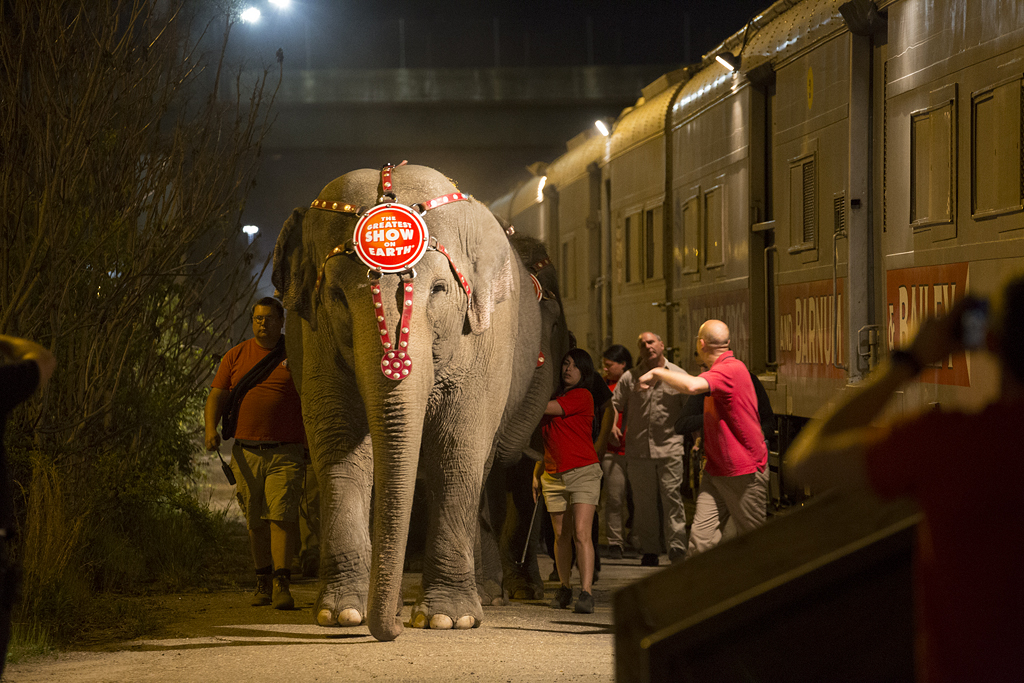The problem for museums and preservationists is there is a little if anything left of the original interiors, says Brad Black, a vice president with Virginkar & Associates, Inc., which consults on passenger car and rail transit rolling stock, equipment, and locomotive projects. Black says the cars have been “tunneled out,” with the interiors stripped to empty shells. So the cars bear no resemblance to when they were in their previous service. In fact, Black says, in recent years Ringling has been purchasing old coaches rather than sleeping cars, because there are fewer interior walls to tear out.
Cars were assigned to specific acts. After being stripped, Ringling installed a custom interior, based on the needs of that act. Some acts occupy an entire car, while others would be divided up. Interior furnishings were tailored to the act, and might even contain special areas for equipment the act would need to take along. Typically, acts were on the road for two years, and the car was considered their home. Some cars don’t even have aisles through them, since performers generally did not pass through the cars while on the road.
“They are more like hotel rooms than rail cars,” Black says. “So if a museum is going to preserve it as a Ringling Circus car that would work. But if they are thinking, ‘The car was originally this,’ and they are getting that, not really. They tunneled them completely out.”
The cars could be valuable, Black said, to someone who was building a private train and needed empty “shell” cars. “The underbody equipment is very much up to snuff,” He says. “They are good, mechanically sound shells.”
Cars that might be of particularly use for museums and other organizations, Black says, are the six-wheel-truck former elephant cars, and the power cars, which once were owned by Union Pacific. In particular, Black said, the power cars are in excellent shape, and are “whisper quiet” when running.
Other cars that might be available are the large stock of un-rebuilt cars Ringling kept at its shop in Ellenton. Even if it didn’t have a use for a car, Ringling scoured the country scooping up carbodies for possible future use. When a car wasn’t destined for immediate rebuilding, its trucks were usually quickly rebuilt and put to use, so there are a large number of carbodies stored at the shop without trucks.
Black said the Ringling shutdown came as a shock to members of the Railway Passenger Car Alliance, an organization private railroad equipment owners and operators. Some RPCA members have been providing equipment and parts for Ringling’s cars for several years, and have suddenly lost a major customer.
One fear, Black said, is that Ringling might just scrap its rail cars. Most of its flatcars have reached 50 years old; Ringling was planning a rebuild that now will never come. The company could decide to simply dispose of the car fleet to scrappers, save a handful going to circus related museums.















What I head is UP bought their cars back and gave them their old names. Most of the cars in the Red Unit belonged to UP before Ringling bought them. Now that Ringling is bankrupt UP bought the cars back and repainted them they are now part of the heritage fleet. Kentucky Steam and CSX will get the rest to use for their steam program.
I’m sure Amtrak could use the Trucks for the Pacific parlor cars used on the Coast Starlight
Still hopefully if museum’s want to save a few that be nice.
I say send the bulk of the passenger cars to Iowa Pacific. Then they can take more trains off of Amtrak’s hands.